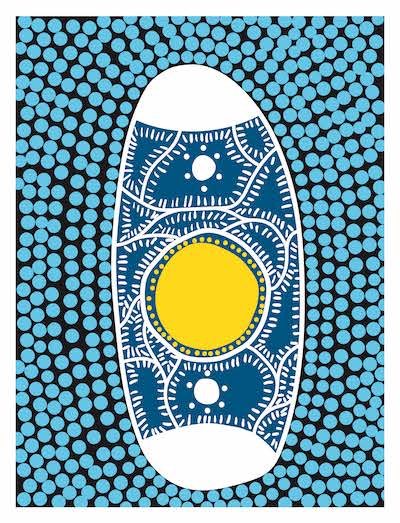Wingara Project – Landscape Regeneration
This is a dedicated webpage contains information about our proposed vision to convert section of the bushland at the rear of the Junior School Campus, known as Wingara, into safe and accessible learning and recreation space.
As many would know, this vision has been a long time in the making and we are looking forward to continuing to develop a proposal, in collaboration with the school and broader communities, that will benefit students, staff, parents now and into the future.
We have now completed our designs for the first stage of the re-development with our landscape architects, planners and technical consultants , these designs have been informed by the outcomes of our engagement with the school community and local residents.
In the meantime, we encourage you to have a look at a short video, photos of the current landscape, a statement from our Principal as well as the latest FAQs about the proposal.
"Research indicates outdoor experiences play an important role in education as well as providing positive health and well-being outcomes for children. At the very heart of our proposal is a commitment to delivering real educational and wellbeing benefits to our students while delivering environmentally sustainable outcomes and mitigating impacts to neighbouring residents."
Mr Graham Leddie
Principal
The Principal and Director of the Junior School discuss Wingara
Project FAQs
What is Waverley College planning for the land at the rear of Wingara?
Waverley College will be landscaping the southern end of the Wingara space, approx 1 fith of the total area covered by bushland. Its will provide safe, usable learning and recreation space.
Our vision is to provide students with greater opportunities to explore and connect with this natural environment in a safe and engaging way. We are looking to preserve much of the existing environment, including the native trees and flora, whilst providing much needed outdoor space for our students.
What are the details of what is proposed?
The design includes the following key elements:
- Protection and retention of important ecological species, including fig trees, palm trees, banksias and eucalypts.
- Extensive planting of local native plant species, including grasses, ferns, groundcover and canopy trees as shielding to neighbouring properties.
- Inclusion of new terraces to provide learning areas.
- Safety improvements to existing walkways.
- Installation of measures to enhance security, privacy and mitigate noise, including fencing and planting.
The design proposal is intended to deliver an outdoor play and learning environment set in the bush providing climbing and play structures. The design vision for the Wingara space draws heavily on the ‘natural’ character of the Bronte Gully with an emphasis on a rich and diverse layer of local native vegetation.
What are the key drivers for the proposal?
- At the heart of our planning is a commitment to delivering real educational and wellbeing benefits to our students while delivering environmentally sustainable outcomes and mitigating impacts to neighbouring residents.
- Access to safe and accessible outdoor recreation and learning spaces are at a premium in the Waverley area.
- Current research indicates outdoor experiences have an important role in education as well as providing positive health and well-being outcomes for children.
- Our proposal would provide students with a safe and engaging space to learn, play and connect to nature.
- We are excited to have the opportunity to provide these opportunities for Waverley College students.
What is the proposed location for this new space?
Our proposal would see the school re-occupy the Southern end of the Wingara wilderness space at the rear of the Junior School Campus which borders Brown St. This area is located under the canopy of the existing Moreton Bay fig trees.
At what stage is the proposal?
The design has now been finalised and construction is ready to commence.
What is the planning pathway for the proposal?
As these works are deemed to be landscaping they fall within the Exempt Development category.
When will the planning proposal be submitted?
There is no requirement to submit a formal planning proposal as these works are deemed as an Exempt Development.
What consultants have been engaged?
Waverley College has engaged a number of consultants to help develop the plans and design for Wingara, including:
- Landscape architects.
- Planning Consultants.
- Heritage Consultants.
- Arborists.
- Structural Engineers.
- Geotechnical Engineers.
What are the next steps?
Waverley College will commence work in the coming months.
Prior to this work being started local residents will be informed.
What will be the impact on local traffic and parking?
As the proposal has been scaled back from the previous design it is not anticipated to result in an increase to local traffic volumes or to impact current on-street parking arrangements.
What is being done to preserve and maintain the area’s character and heritage?
Waverley College recognises the cultural and environmental importance of the site and the design team has engaged consultants to ensure our proposal respects and enhances the local character and cultural and environmental histories of the Wingara space:
- Extensive local native tree and shrub planting is central to the design as well as the use of sandstone (the natural geology) all of which respond to and enhance the natural landscape character.
Has there been any local consultation with First Nation’s people?
Waverley College together with our landscape architects consulted local Aboriginal Elders to inform development of our initial concept plan.
What specific mitigations will be implemented to maintain the privacy of neighbouring properties?
The design will mitigate impacts to privacy, security and amenity through mechanisms such as additional tree planting.
What impacts will there be on solar access to neighbouring properties?
It is not anticipated that this reduced scope will impact solar access of any of the neighbouring properties.
What fencing or other structures are proposed to mitigate access to neighbouring properties from the school?
The design will enhance security for the campus and neighbouring properties through installation of a 1.8-metre-high fence to the Southern edge to secure the boundary.
What is being done to recognise Wingara’s heritage protected vegetation?
We recognise the protected heritage status of many of the trees at Wingara as well as the importance of this space to local residents. These factors are reflected in our concept design which ensures retention and protection of the existing sandstone outcrop, the mature figs and heritage listed palm, jacaranda, banksia and eucalyptus trees.
Our concept design would enhance the area’s green character to provide a natural setting for future activities in the space through:
- Removal of weeds (Privet, Lantana, Cestrum, Madeira Vine, Morning Glory) and unsafe vegetation (Coral Trees) to be replaced with appropriate local native species.
- Preservation of ecologically important species.
- Increased planting.
- Reconfiguration of lower area to include more planted areas and trees.
When will construction take place?
It is anticipated that construction will be undertaken in Terms 3 and 4 of 2024.
What measures will be taken to manage wildlife displaced during site remediation and construction?
The management of flora and fauna will be detailed in our Construction Management Plan and informed by the technical studies we have commissioned.
How will construction impacts be managed?
- Construction activities would be subject to a Construction Management Plan. The Plan will provide details of permitted hours of work, the types of work that can be undertaken and the range of potential construction mitigation measures that would be implemented.
- The Plan will also provide details of the proposed arrangements for construction-related vehicles, including the use of local streets, access to the site and parking.
- Proactive notification of the school community and local residents would be required ahead of any potentially impactful work.
- Materials for the landscaping works will be moved onto site from the Junior Campus and via the easement from Brown Street on the Eastern boundary.
How will the impacts of stormwater and soil erosion be managed?
Stormwater and soil erosion will be managed and mitigated through design and planning and informed by the relevant consultant reports.
What steps have been taken to engage with the community so far?
As part of the original concept designs for Wingara the College liaised with our staff, students and members of our community to seek feedback to inform ongoing planning and design. Engagement activities undertaken included:
- Distribution of letters to neighbouring residents and other interested community members.
- Creation of a dedicated page on our website as a central point for information and updates.
What has happened as a result of the engagement undertaken?
As part of the original design we received substantial feedback, particularly from neighbouring residents, about issues such as traffic, access and parking, preservation of local character and environment, impacts of stormwater and soil erosion and privacy, security and amenity.
Waverley College has listened to this feedback and a number of changes have already been made to our design as a result, underscoring our commitment to engagement and the importance we attach to being a good neighbour and member of the local community.
What are the community contact channels?
If you have any further questions or would like to provide any feedback, please contact us at: wingara@waverley.nsw.edu.au








